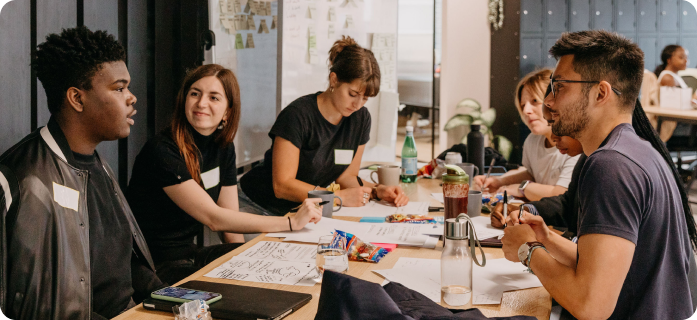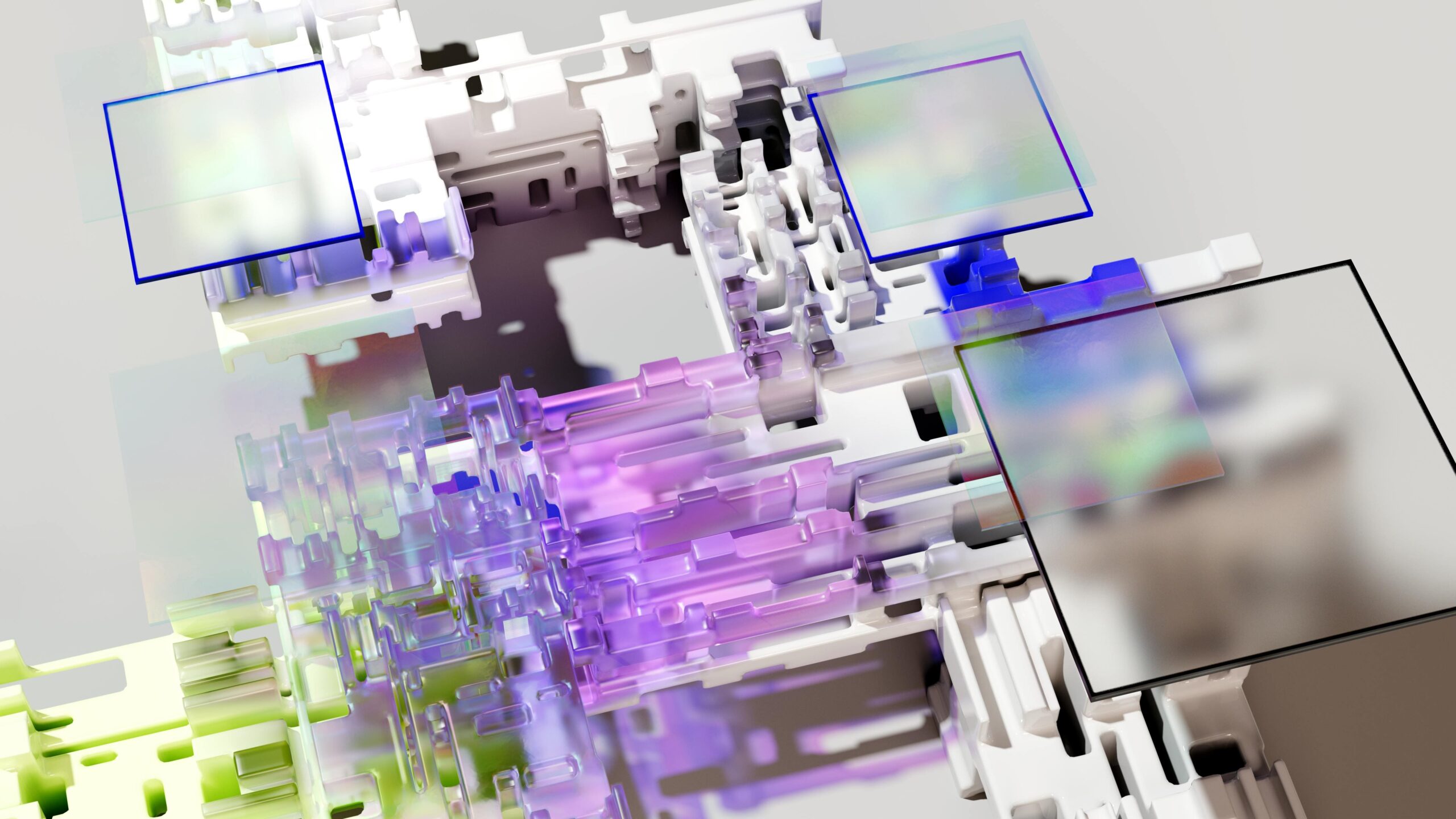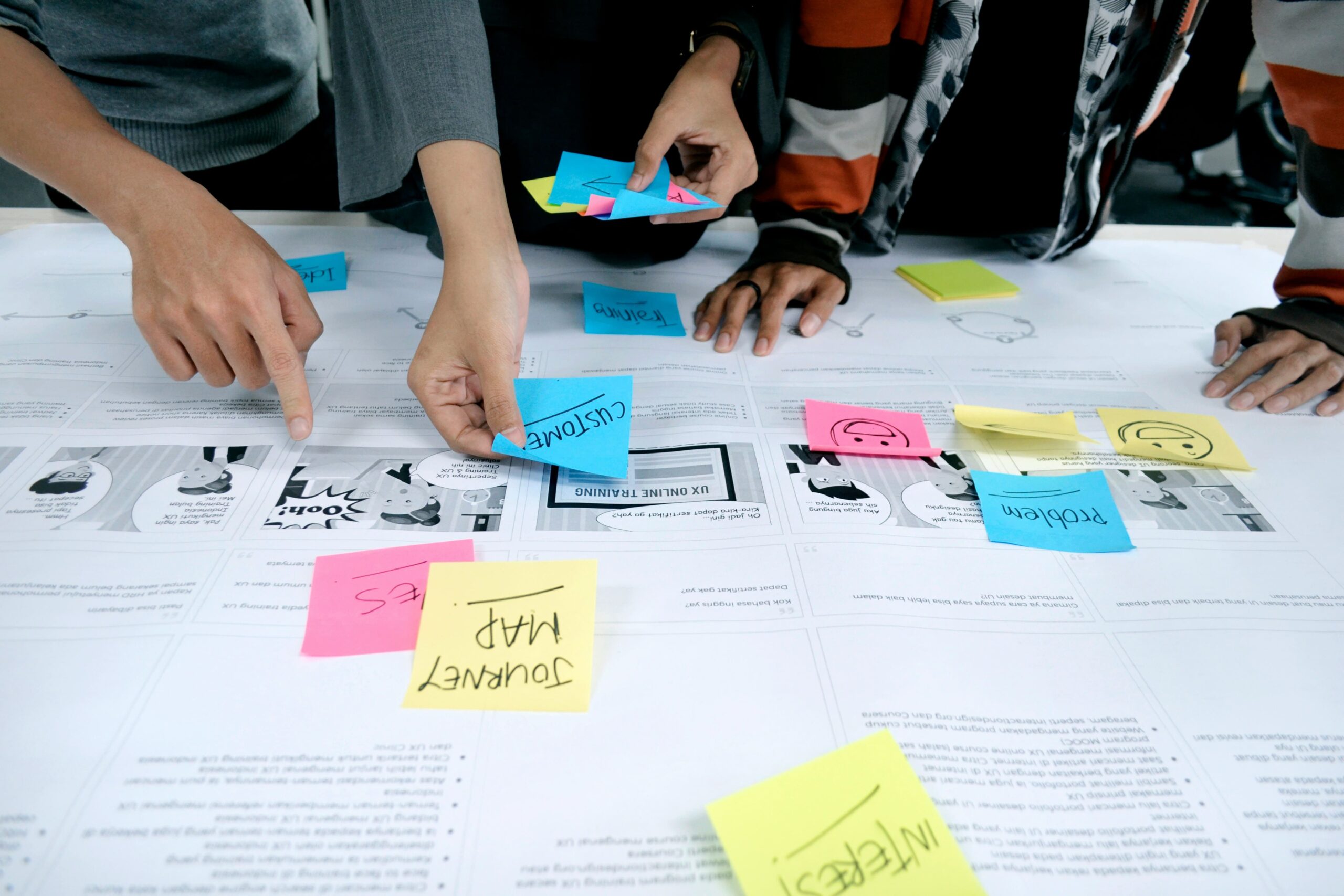UX in Product Design: Crafting Delightful User Experiences
In product design, success hinges on understanding and catering to users’ needs. This is where the user experience (UX) field comes into play, focusing on designing intuitive, efficient and enjoyable products.
By incorporating UX principles and practices into the product design process, designers can create products that meet the functional requirements and exceed user expectations. This article will explore the critical role of UX in product design, delving into crucial aspects such as user research, design thinking, and the responsibilities of UX designers in creating successful products.
This article is brought to you by Experience Haus – London’s leading provider of immersive, real-world courses in design, strategy, marketing and tech. Whether you’re looking to launch a new career in UX/UI design, upskill in product management, or explore the latest in AI, Experience Haus offers expert-led training to help you succeed. Explore our range of UX/UI courses to open up a world of exciting career possibilities.
Understanding UX in Product Design
At its core, UX in product design is about understanding your target users’ needs, desired and behaviours. It involves conducting thorough research to gain insights into how users interact with a product and identifying areas for improvement.
By focusing on UX, designers can create products that are not only visually appealing but also highly functional and user-friendly. This approach leads to increased user satisfaction, engagement and loyalty, ultimately contributing to the product’s success in the market.
The Importance of User Research
User research is a fundamental aspect of UX in product design. It involves gathering data and insights about your target group through various methods such as surveys, interviews, focus groups, and usability testing.
By conducting user research, designers can deeply understand user needs, preferences and pain points. This information is invaluable in informing design decisions and ensuring that the product meets the expectations of its intended audience.
The Design Thinking Process
Design thinking is a human-centred problem-solving approach widely used in UX and product design. It involves empathising with the problem, ideating potential solutions, prototyping and testing to refine the design.
Following the design thinking process, designers can develop innovative solutions that address user needs and create functional and delightful products. This iterative approach allows continuous improvement and refinement based on user feedback and insights.
The Role of a UX Designer
UX designers play a crucial role in the product design process. They conduct user research, create wireframes and prototypes, and collaborate with cross-functional teams to ensure the final product meets user needs and business objectives.
UX designers must possess technical skills, such as proficiency in design tools and usability principles, and soft skills, such as empathy, communication, and problem-solving abilities. They advocate for the user throughout the design process, prioritising their preferences.
Collaborating with UX Designers
Effective collaboration between UX designers and other product team members, such as product managers, developers and stakeholders, is essential for the product’s success. UX designers bring a unique perspective and skill set to the table, and their input should be valued and incorporated into design-making processes.
By fostering open communication, mutual respect and a shared understanding of project goals, teams can leverage the expertise of UX designers to create products that are not only technically sound but also user-friendly and engaging.
The Fundamentals of UX in Product Design
To fully understand the role of UX in product design, it’s essential to grasp the fundamental concepts and principles that form the foundation of this field. This section will provide an overview of the critical elements that contribute to creating exceptional user experiences.
What is User Experience (UX)?
User experience (UX) refers to a user’s overall experience when interacting with a product, system, or service. It encompasses all aspects of the user’s interaction, including their perceptions, emotions, and behaviours.
UX is not just about a product’s functionality but also about how it makes the user feel. A positive user experience is intuitive, efficient, and satisfying, leaving the user with a sense of accomplishment and delight.
The User-Centred Design Approach
User-centred design is a design philosophy that places the user at the centre of the design process. It involves understanding the target users’ needs, goals, and behaviours and designing the product around these insights.
By adopting a user-centred design approach, designers can create products tailored to their users’ needs and preferences. This approach involves conducting user research, creating user personas, and continuously gathering feedback throughout the design process to ensure that the product meets user expectations.
The Importance of Usability Testing
Usability testing is a critical component of UX design. It involves evaluating a product by testing it with representative users to identify usability issues and gather feedback for improvement.
By conducting usability testing at various stages of the design process, designers can identify and address potential problems early on, saving time and resources in the long run. Usability testing also provides valuable insights into how users interact with the product, allowing designers to make informed decisions and refine the design accordingly.
Measuring User Satisfaction
Measuring user satisfaction is essential for gauging a product’s success and identifying areas for improvement. Various methods, such as surveys, interviews, and analytics, can assess user satisfaction.
By regularly measuring user satisfaction, designers can track the effectiveness of their design decisions and make data-driven improvements. This feedback loop ensures that the product continues to meet user needs and expectations over time.
Prototyping Tools for UX Design
Prototyping is an essential part of the UX design process. It allows designers to quickly and efficiently test and refine their ideas. Various prototyping tools are available, from simple paper sketches to high-fidelity digital prototypes.
Some popular prototyping tools UX designers use include Sketch, Figma, Adobe XD, and InVision. These tools allow designers to create interactive prototypes that closely resemble the final product, enabling them to gather valuable feedback and iterate on their designs.
Conducting Effective User Research
User research is the foundation of UX design, as it provides the insights necessary to create products that meet the needs and expectations of target users. This section will explore the methods and best practices for conducting effective user research.
Understanding Your Target Users
The first step in conducting user research is to define and understand your target users. This involves creating user personas and fictional representations of your ideal users based on demographic, psychographic, and behavioural data.
By developing user personas, designers can better understand their target audience’s needs, goals, and pain points. This understanding allows them to design products that cater to these users, increasing the likelihood of adoption and satisfaction.
Techniques for Conducting User Research
There are various techniques for conducting user research, each with its strengths and limitations. Some standard methods include surveys, interviews, focus groups, and observational studies.
Surveys are a quick and efficient way to gather quantitative data from many users, while interviews and focus groups provide more in-depth, qualitative insights. Observational studies involve watching users interact with a product in their natural environment, providing valuable insights into real-world usage patterns and behaviours.
Analysing User Data
Once user research data has been collected, it must be analysed to extract valuable insights. This involves organising, synthesising, identifying patterns and trends, and drawing conclusions based on the findings.
Data analysis can be done manually or with the help of specialists such as ATLAS.ti or NVivo. The goal is to distil the data into actionable insights to inform design decisions and guide product development.
Creating User Personas
User personas are powerful tools for communicating user research findings to the rest of the product team. They provide a tangible representation of the target users, making it easier for team members to empathise.
When creating user personas, it’s essential to base them on actual data gathered through user research. Each persona should include demographic information, goals, frustrations, and a narrative that brings the persona to life.
Translating Research Insights into Design Decisions
The ultimate goal of user research is to inform design decisions and guide the product development process. To achieve this, research insights must be translated into actionable design recommendations.
This involves prioritising pain points, identifying opportunities for improvement, and developing design solutions that address these issues. By grounding design decisions in user research, designers can create aesthetically pleasing, highly functional, and user-friendly products.
Implementing Design Thinking in Product Design
Design thinking is a human-centred approach to problem-solving that has gained widespread adoption in product design. This section will explore how the design thinking process can be applied to product design, guiding designers through empathising, empathising, prototyping, and testing.
The Five Stages of Design Thinking
The design thinking process comprises five key stages: empathise, define, ideate, prototype, and test. Each stage builds upon the insights gathered in the previous stage, allowing designers to refine their solutions iteratively.
The empathy stage involves deeply understanding the target users through research and observation. The define stage focuses on framing the problem and identifying user needs. The ideate stage generates a wide range of potential solutions, while the prototype and test stages involve creating tangible representations of the solutions and gathering user feedback to refine them.
Empathising
Empathy is at the heart of design thinking. It involves putting aside assumptions and biases and stepping into the user’s shoes to understand their needs, motivations, and challenges.
To empathise, designers can conduct interviews, observe users in their natural environment, and engage in immersive experiences that simulate the user’s perspective. By deeply understanding the user’s context and emotional state, designers can create solutions that resonate with their target audience.
Defining the Problem
The definition stage involves synthesising the data gathered during the empathy stage to address the problem in a user-centred way. This involves identifying patterns and themes in the data and articulating the problem statement regarding the user’s needs and goals.
A well-defined problem statement should be specific, actionable, and framed from the user’s perspective. It serves as a guidepost for the rest of the design thinking process, ensuring that the solutions generated are aligned with the user’s needs.
Ideating Potential Solutions
The ideate stage is about generating a wide range of potential solutions to the problem statement. This involves brainstorming techniques such as mind mapping, sketching, and prototyping to explore different ideas and approaches.
Creativity aims to generate as many ideas as possible without judging or filtering them. This allows for a diverse range of perspectives and encourages creative thinking. Once a range of ideas has been generated, they can be evaluated and refined based on their feasibility, desirability, and viability.
Prototyping and Testing
The prototype and test stages involve creating tangible representations of the most promising solutions and gathering user feedback to refine them. Depending on the stage of the design process and the level of detail required, prototypes can range from low-fidelity sketches to high-fidelity digital mockups.
Testing prototypes with users allows designers to validate their assumptions, identify usability issues, and gather feedback for improvement. This iterative process ensures that the final solution meets user needs and expectations.
The Impact of UX on Business Success
UX design is not just about creating delightful user experiences; it also significantly impacts business success. This section will examine how UX contributes to business outcomes by improving customer satisfaction, creating competitive advantages, and optimising costs.
Aligning UX with Business Strategy
To maximise UX’s impact on business success, aligning UX goals with the overall business strategy is essential. This involves understanding the company’s mission, vision, and objectives and ensuring that UX efforts are focused on supporting these goals.
By aligning UX with business strategy, designers can create products that meet user needs and contribute to the company’s bottom line. This alignment also helps to secure buy-in and support from stakeholders, as the value of UX is tied to business outcomes.
Improving Customer Satisfaction Through UX
One primary way UX contributes to business success is by improving customer satisfaction. When users have a positive experience with a product, they are likely to continue using it, recommend it to others, and develop a sense of loyalty to the brand.
UX designers can drive customer satisfaction and retention by focusing on user needs and creating intuitive, efficient, and enjoyable experiences. This, in turn, leads to increased revenue, as satisfied customers are more likely to make repeat purchases and engage with the brand over time.
UX as a Competitive Advantage
UX can be a key differentiator and competitive advantage in today’s crowded marketplace. Companies that prioritise UX and produce superior products in terms of usability, functionality, and overall experience can stand out from their competitors and capture market share.
By investing in UX, companies can create better products for users and be more successful in the market. This competitive advantage can increase brand recognition, customer loyalty, and business growth.
Optimising Costs with UX
While it may seem counterintuitive, investing in UX can help optimise costs in the long run. By conducting user research and iterating on designs early in the development process, companies can identify and address potential issues before they become costly to fix.
Additionally, by creating intuitive and easy-to-use products, companies can reduce the need for customer support and training, reducing costs. In this way, UX can contribute to a more efficient and cost-effective product development process.
Measuring the Business Value of UX
To demonstrate the value of UX to stakeholders and justify investment in UX efforts, it’s essential to measure the business impact of UX. This involves tracking metrics such as user engagement, conversion rates, customer satisfaction, and revenue growth.
By regularly measuring and reporting on UX’s business value, designers can build a strong case for its importance and secure ongoing support and resources. This data-driven approach helps elevate UX’s role within the organisation, a critical component of business success.
Collaborating with UX Designers in Product Development
Effective collaboration between UX designers and other product development team members is essential for creating successful products. This section will guide how to collaborate with UX designers throughout the product development process, from defining the product vision to implementing the final design.
Defining the Product Vision
The first step in collaborating with UX designers is to define a clear and compelling product vision. This involves articulating the product’s goals, target users, and unique value proposition.
UX designers can play a vital role in this process by conducting user research and providing insights into user needs and preferences. By working together to define a shared product vision, the entire team can ensure that everyone is working towards the same goals and that the final product meets the needs of its intended audience.
Integrating UX into the Design Process
To create functional and user-friendly products, it’s essential to integrate UX into every stage of the design process. This involves including UX designers in critical meetings and decision-making processes and ensuring their input is valued and incorporated into the final product.
By involving UX designers early and often, teams can catch potential usability issues early on and make informed design decisions. This collaborative approach helps to ensure that the final product is more than just technical.
Working with Cross-Functional Teams
UX designers often work in cross-functional teams, collaborating with professionals from various disciplines, such as product management, engineering, and marketing. To facilitate effective collaboration, it’s essential to establish clear communication channels and a shared understanding of project goals and priorities.
Regular check-ins, design reviews, and feedback sessions keep everyone aligned and ensure the product development process stays on track. By fostering a culture of open communication and mutual respect, teams can leverage their members’ diverse skills and perspectives to create truly exceptional products.
Implementing UX Design Solutions
Once the UX design solutions have been developed and refined, it’s time to implement them into the final product. This involves close collaboration between UX designers and developers to ensure the design is technically feasible and that the final product meets the intended user experience.
To guide the development process, UX designers should provide detailed design specifications and assets, such as wireframes, prototypes, and style guides. They should also be available to answer questions and provide guidance, ensuring the final product stays true to the original design intent.
Continuously Iterating and Improving the Product
Product development is an ongoing process, and the work of UX designers doesn’t end with the product’s launch. Gathering user feedback and continuously iterating on the design is essential to ensure that the product meets user needs and expectations over time.
UX designers can play a vital role in this process by conducting user testing, analysing usability, and identifying areas for improvement. By working collaboratively with the rest of the product team to prioritise these improvements, UX designers can help ensure that the product remains relevant and valuable to users over the long term.
The Role of UX Designers in Product Design
UX designers are critical in product design, bringing a user-centred perspective and unique skills. This section will delve into UX designers’ specific responsibilities and skills, highlighting their contribution to the product design process and the key differences between UX and other design roles.
Critical Responsibilities of UX Designers
UX designers are responsible for ensuring that the product meets the needs and expectations of its target users. This involves a wide range of activities, including:
- Conducting user research to understand user needs, behaviours, and preferences
- Developing user personas and user journeys to guide the design process
- Creating wireframes, prototypes, and high-fidelity mockups to visualise design solutions
- Collaborating with cross-functional teams to ensure that the design is technically feasible and aligns with business goals
- Conducting usability testing to validate design decisions and gather feedback for improvement
By taking on these responsibilities, UX designers help ensure that the final product is aesthetically pleasing but also intuitive, efficient, and enjoyable.
Essential Skills for UX Designers
To be effective in their role, UX designers must possess a diverse set of skills, including:
- User research and analysis skills to gather and interpret user insights
- Information architecture and interaction design skills to create intuitive and efficient user flows
- Visual design skills to create aesthetically pleasing and engaging user interfaces
- Prototyping and wireframing skills to quickly and effectively communicate design ideas
- Collaboration and communication skills to work effectively with cross-functional teams
In addition to these technical skills, UX designers must possess strong empathy, problem-solving, and critical thinking abilities. They must be able to put themselves in the user’s shoes, identify, prioritise and develop creative solutions to complex design challenges.
Collaborating with UI Designers and Developers
UX designers work closely with user interface (UI) designers and developers to bring their designs to life. UI designers are responsible for the product’s visual design, including the layout, colour scheme, typography, and iconography.
On the other hand, developers are responsible for implementing the design into code and ensuring it functions as intended. UX designers must collaborate closely with UI designers and developers to ensure the final product meets the intended user experience and is technically feasible.
The Difference Between UX and Graphic Design
While both UX and graphic design involve visual design skills, they serve different purposes and focus on various aspects of the user experience. Graphic designers primarily focus on the product’s aesthetic appeal, creating visually stunning and memorable designs.
On the other hand, UX designers are primarily concerned with the product’s functionality and usability, ensuring that it meets the needs and expectations of its target users. While visual design is undoubtedly a part of UX design, it is just one of many considerations that UX designers must consider.
Career Paths and Opportunities for UX Designers
As the field of UX design continues to grow and evolve, many exciting career paths and opportunities are available to UX designers. Some common career paths include:
- Specialising in an area of UX design, such as user research, information architecture, or interaction design
- Moving into a leadership role, such as a UX manager or director, and overseeing the work of other UX designers
- Transitioning into a related field, such as product management or digital marketing, and applying UX principles to new domains
- Starting a freelance or consulting business and working with a variety of clients and industries
Regardless of the specific career path, UX designers can expect to be in high demand as more companies recognise user-centred design. UX designers can position themselves for long and successful careers in this dynamic and rewarding field by continually developing their skills and staying up-to-date with the latest trends and best practices.
Advance Your Design Career with Experience Haus
Ready to advance your design skills? Experience Haus offers immersive courses and workshops in UX/UI design, product design, AI, and more. Led by industry experts, our real-world training helps both aspiring and experienced designers gain the skills and confidence needed to succeed.
Experience Haus courses feature:
- Live client projects to build your portfolio
- Small class sizes for personalised training
- Online and in-person formats in London
- Career support and an active community
Explore our upcoming courses in:
Ready to jumpstart your design career? Browse our complete course offerings and sign up today. Join our newsletter to stay updated on the latest courses, events, and industry insights.
Start your design journey with Experience Haus and open up a world of exciting career possibilities. We look forward to being part of your creative future.




